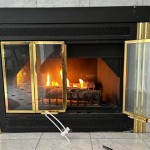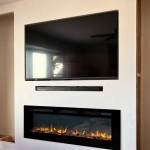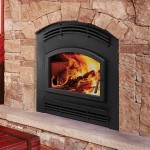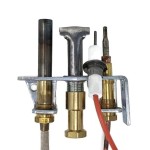How To Build An Outdoor Fireplace With Bricks
An outdoor brick fireplace can transform a backyard into a cozy and inviting entertainment space. The project requires careful planning, attention to detail, and adherence to safety guidelines. This article details the process of constructing an outdoor brick fireplace, outlining the necessary steps from site preparation to final finishing touches.
Before commencing any construction, it is crucial to consult with local authorities regarding building codes and permit requirements. Fire safety regulations vary depending on the location, and failure to comply may result in fines or the need to dismantle the structure. Specifically, inquire about required setbacks from property lines, necessary clearances from flammable materials such as trees or fences, and any regulations regarding the type of fuel that can be burned.
Safety precautions are paramount throughout the entire construction process. Wear appropriate personal protective equipment (PPE), including safety glasses, gloves, and a dust mask, especially when mixing mortar or cutting bricks. Ensure a stable work surface and use appropriate tools for the task. Secure the work area to prevent unauthorized access, particularly if children or pets are present. Never work under the influence of alcohol or drugs.
Planning and Preparation
The initial stage involves careful planning and preparation, including selecting the location, designing the fireplace, and gathering necessary materials and tools. A well-defined plan will minimize errors and ensure a structurally sound and aesthetically pleasing fireplace.
Location Selection:
Choosing the optimal location is critical. Consider factors such as wind direction, proximity to seating areas, and potential fire hazards. The fireplace should be situated away from trees, shrubs, and other flammable materials. Ideally, it should be positioned to minimize smoke blowing toward the house or neighboring properties. A level surface is essential for a stable foundation. Avoid areas prone to flooding or excessive moisture.
Design and Dimensions:
The design of the fireplace should complement the existing landscape and architectural style of the house. Determine the desired height, width, and depth of the firebox and chimney. A larger firebox will accommodate larger fires, while a taller chimney will improve draft and reduce smoke. Consider incorporating features such as a hearth, mantel, or storage for firewood. Create detailed drawings or blueprints outlining the dimensions and layout of each component. Several online resources offer free or paid fireplace design plans.
Materials List:
Prepare a comprehensive list of all necessary materials, including bricks, mortar, firebricks, concrete mix, gravel, chimney liner, and any decorative elements. Calculate the quantity of each material based on the design specifications. Purchase high-quality materials from reputable suppliers to ensure durability and longevity. Consider using firebricks specifically designed for high-temperature applications within the firebox.
Tools Required:
Gather all the necessary tools before starting construction. Essential tools include a shovel, wheelbarrow, level, trowel, brick hammer, brick saw (or angle grinder with a diamond blade), mortar mixer (optional but highly recommended), measuring tape, safety glasses, gloves, and a dust mask. Rent or purchase tools as needed to ensure you have the right equipment for each task.Building the Foundation
A solid foundation is crucial for the stability and longevity of the outdoor brick fireplace. The foundation must be able to support the weight of the structure and prevent settling or cracking. This section describes the steps involved in constructing a robust foundation.
Excavation:
Excavate the area for the foundation to the required depth, typically below the frost line to prevent damage from freezing and thawing cycles. The depth will vary depending on the climate. The excavated area should be larger than the base of the fireplace to allow for a concrete footing. Compact the soil at the bottom of the excavation using a hand tamper or plate compactor.
Gravel Base:
Pour a layer of gravel into the excavated area, typically 4 to 6 inches thick. The gravel provides drainage and helps prevent moisture from wicking up into the foundation. Compact the gravel thoroughly to create a stable base.
Concrete Footing:
Construct a concrete footing on top of the gravel base. The footing should be wider and thicker than the brick walls of the fireplace. Use wooden forms to contain the concrete while it sets. Pour the concrete into the forms and level it with a screed board. Use a trowel to smooth the surface. Allow the concrete to cure for at least 7 days before proceeding to the next step. Keep the concrete moist during the curing process to prevent cracking.
Concrete Slab:
After the footing has cured, construct a concrete slab on top of the footing. This slab will serve as the base for the brick fireplace. Use wooden forms to contain the concrete and ensure it is level. Reinforce the slab with rebar to increase its strength and prevent cracking. Pour the concrete into the forms and level it with a screed board. Use a trowel to smooth the surface. Allow the concrete to cure for at least 7 days before proceeding to the next step.Constructing the Fireplace
Once the foundation is complete, the construction of the brick fireplace can begin. This involves laying the bricks, mixing and applying mortar, and installing the firebox and chimney. This section details the process of building the fireplace, emphasizing accuracy and attention to detail.
Brick Laying:
Begin laying the bricks according to the pre-determined design. Start with the base of the fireplace and work your way up, course by course. Use a level to ensure that each course is perfectly horizontal. Stagger the joints between bricks for added strength and stability. Apply mortar to the ends and bottoms of each brick before placing it in position. Use a trowel to remove excess mortar.
Mortar Mixing:
Mix the mortar according to the manufacturer's instructions. Use a mortar mixer for large projects to ensure a consistent mix. Add water gradually until the mortar reaches a smooth, workable consistency. Avoid adding too much water, as this will weaken the mortar. Let the mortar slake for 10-15 minutes before using it. This allows the ingredients to fully hydrate and improves the mortar's workability.
Firebox Construction:
The firebox is the heart of the fireplace and must be constructed with firebricks specifically designed for high-temperature applications. Lay the firebricks in a bed of refractory mortar, ensuring that all joints are tightly sealed. The firebox should be sized according to the desired fire size and draft requirements. Consider incorporating a damper to control airflow and prevent heat loss when the fireplace is not in use.
Chimney Construction:
The chimney is responsible for venting smoke and gases away from the fireplace. Construct the chimney using bricks and mortar, following the design specifications. The chimney should extend high enough to provide adequate draft. Install a chimney liner to protect the brickwork from the corrosive effects of combustion gases. The liner should be made of stainless steel or clay. Ensure the chimney liner is properly insulated to prevent condensation and improve draft.
Finishing Touches:
Once the brickwork is complete, add any desired finishing touches, such as a hearth, mantel, or decorative elements. Clean the brickwork with a wire brush and water to remove excess mortar. Allow the mortar to fully cure before using the fireplace. Apply a sealant to protect the brickwork from moisture and weathering.The chimney should be properly capped to prevent rain from entering and damaging the fireplace. A spark arrestor should also be installed to prevent embers from escaping and potentially causing a fire. Regularly inspect the fireplace and chimney for any signs of damage or deterioration. Repair any cracks or loose bricks promptly to prevent further damage. Have the chimney professionally cleaned annually to remove creosote buildup, which can pose a fire hazard. When using the fireplace, never leave it unattended. Keep a fire extinguisher and bucket of water nearby in case of emergency.

How To Build An Outdoor Fireplace Today S Creative Life

How To Build An Outdoor Fireplace Step By Guide Buildwithroman

Outdoor Fireplace With Bench Seating W Tips From A Professional Mason

How To Build An Outdoor Fireplace Step By Guide Buildwithroman

Building An Outdoor Fireplace With Tips From A Professional Mason
:max_bytes(150000):strip_icc()/outdoor-fire-pit-ideas-00ba790bf8f14670a9e78ecdad266497.jpg?strip=all)
31 Diy Fire Pit Ideas And Plans For Your Backyard

Small Outdoor Brick Fireplaces Related Post From Diy Fireplace Plans

How To Build A Brick Fireplace Diy Part 1 Of 5

Stonetutorials Living Stone Masonry

How To Build An Outdoor Fireplace Step By Guide Buildwithroman
Related Posts








